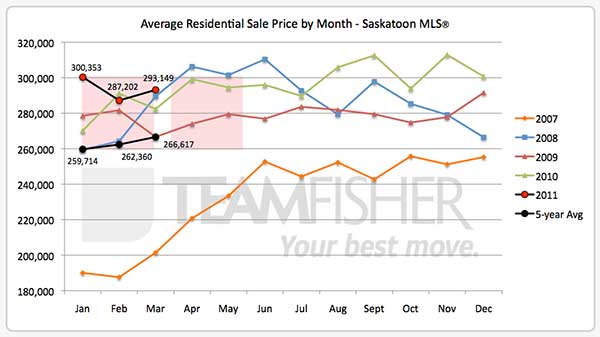Results of a recent Royal LePage study released today.
Despite the perception that aging Baby Boomers may create an oversupply of traditional single-family homes as they downsize into smaller residences, a new Royal LePage Real Estate survey shows that demand for suburban detached homes remains strong among Baby Boomers and Generation Y.
The poll by Leger Marketing found that of the 40.6 per cent of Baby Boomers (born between 1947 and 1966), who do have plans to move to another primary residence, almost half (43.5 per cent) are looking to purchase another primary residence that is a similar size or larger than their current property. Of the total responses from Baby Boomers who intend to purchase their next primary residence, 66.8 per cent said they will do so in the next five years.“Baby Boomers are the wealthiest generation in Canadian history. They live in large homes with ample space for their many possessions. They love their garages and their yards. This study clearly indicates that contrary to popular belief, most Boomers do not intend to downsize anytime soon,” said Phil Soper, CEO of Royal LePage Real Estate.
Male Baby Boomers, who are planning to move, are more keen on upsizing their residence than women, with 23.0 per cent reporting that they plan on moving to a larger residence compared to 12.1 per cent of women. Baby Boomers looking to purchase a condominium prefer less amenities and low maintenance fees (54.5 per cent) over properties that have many amenities (39.1 per cent). Seventy-eight per cent of Baby Boomers currently own their own homes.
Contributing to the desire of Baby Boomers to continue to invest in large, suburban homes is the reality of housing children well into adulthood. According to the survey, a quarter of Generation Y lives rent free because of arrangements with family or friends, but that number climbs to 33.4 per cent in the Prairies, 29.7 per cent in Quebec and 27.2 per cent in Ontario.
“The adult children of Baby Boomers aren’t going anywhere fast. Good jobs have proven more difficult for them to find, they’re extending their studies and they’re living at home. It is no wonder the concept of swapping a family-sized home for a small retreat has lost its luster,” said Soper.
Meanwhile, members of Generation Y (those born between 1980 and 1994), who plan to purchase their next residence, are most interested in single-family multi-storey homes (50.6 per cent) and bungalows (19.0 per cent). Only 15.7 per cent of Generation Y said they plan to buy a condominium or an apartment. In comparison, 22.9 per cent of Baby Boomers looking to purchase their next residence desire condominiums or apartments.
The survey found that more than half of Generation Y planning to purchase their next residence, intend to purchase in the suburbs (55.7 per cent) compared to the downtown core of a city (21.7 per cent). Forty-three per cent of current non-owners who plan to purchase in the next five years say it is because they are planning to start a family in the near future. Among this younger demographic planning to purchase their next residence, the safety of a neighbourhood and proximity to their work, family and friends are the most important attributes when selecting a new home. Keeping in mind that nearly half of Generation Y listed their near-term plans to have children of their own (42.0 per cent) as a motivating factor to purchase, the least important factors are proximity to the downtown city core and restaurants or entertainment.
“The young people who make up Generation Y are our first-time home buyers. Like their parents, they dream of owning a lovely house in the suburbs, which provides value as well as access to parkland for children to play and the perception of greater family safety,” said Soper. “Even as condominium living becomes more popular across Canada, the study results do not point to a corresponding decrease in demand for traditional single-family homes. For the Baby Boomers that do head downtown, there is a generation waiting to move in.”
Among Baby Boomers who plan to downsize when they purchase their next residence, the most popular reasons are to reduce maintenance (73.7 per cent), free up money for retirement (48.1 per cent) and for travel (30.9 per cent).
Regional Comparisons of Those Planning to MoveRegional Generation Y comparisons showed that more Ontarians and Albertans place importance on being close to the city’s downtown area or town’s core than Quebecers and those from the Prairie provinces. Likewise, a gym or fitness centre is more important to Ontarians, Albertans and British Columbians than it is to Atlantic Canadians or Quebecers. Atlantic Canadians also place less importance on proximity to public transportation, restaurants or entertainment than Generation Y living elsewhere in the country.
When comparing Baby Boomers across Canada, Ontarians, Quebecers and Albertans are more likely to choose a home in the country than British Columbians. More Baby Boomers from British Columbia value being close to public transportation when purchasing a home than those from Ontario and Alberta. In addition, there are no significant regional differences comparing Baby Boomers who want to upsize, downsize or continue to live in a similar sized property.
Get the most current market intelligence with our FREE Market Snapshot including prices of homes recently sold in your area. Get it here now.
I’m always happy to answer your Saskatoon real estate questions. All of my contact info is here. Please feel free to call or email.
Norm Fisher
Royal LePage Saskatoon Real Estate

 The Royal LePage House Price Survey and Market Survey Forecast released today showed strong year-over-year price increases for all three housing types surveyed in Saskatoon.
The Royal LePage House Price Survey and Market Survey Forecast released today showed strong year-over-year price increases for all three housing types surveyed in Saskatoon.





